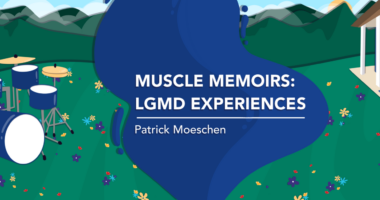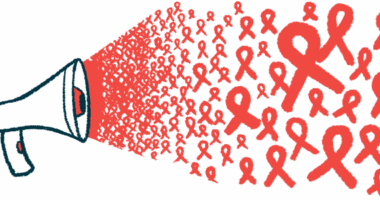Rare Disease Fellowship Teaches Me About Genomics and Empathy
Columnist Hawken Miller considers his dual role as a patient and journalist

The Duchenne muscular dystrophy community is reaping the benefits of innovations in rare disease diagnosis, research, and care. That’s part of what I learned last week while training to cover rare diseases with the National Press Foundation (NPF).
I was selected for the NPF’s Rare Disease Journalism Fellowship. As part of it, I’ll receive a grant to report a story of my choice. Last week’s three-day training, in which I learned from the brightest in the rare disease advocacy community, biotech industry, and government, was part of this fellowship.
Not only did I learn, but I also had a chance to think more about my dual role as a Duchenne patient who covers his own rare disease community, among others. My perspective on rare diseases changed because of the diverse group of international fellows and panelists I was with.
Individualized medicine was referenced several times. It’s taking hold as cheap and rapid whole genome sequencing becomes available in the U.S., better systems for clinical data analysis are employed, and more conditions are added to newborn screening panels. This also helps the development of Duchenne therapies.
Gene therapy and gene editing, at least for now, have shown the most promise, according to Peter Marks, PhD, director of the Center for Biologics Evaluation and Research at the U.S. Food and Drug Administration. He told NPF fellows it was the most straightforward way to treat rare conditions.
With gene therapy, scientists can identify defects in a mutated gene and correct them. I believe that as this technology is deployed, we can address certain issues, such as an immune response and the size of the therapies’ viral vectors, so that people with Duchenne are helped. (Viral vectors are used to deliver genetic material into the body’s cells.)
All sessions were recorded, so fellows didn’t have to take notes and could think about story ideas instead. It also gave me time to reflect on where I, as a journalist and patient, fit into rare disease coverage. I realize that my experience as a patient gives me empathy for the people I interview and brings a rich amount of background knowledge to every story.
A journalist’s empathy is heightened
We heard a powerful story from Richard Engel, chief foreign correspondent of NBC News, who lost one of his sons, Henry, to Rett syndrome. I asked Engel, who was coming to us via Zoom from a military convoy in Odesa, Ukraine, how and why he went public with Henry’s story. He was quick to say that anything he reported on Henry was not necessarily journalism, but rather sharing his personal story with the hope that it would move research forward.
Engel also said that caring for Henry revived his compassion for the people he sees displaced, killed, or injured in war zones. The decades of reporting he’s done in these areas had given him compassion fatigue. But seeing Henry as a bundle of light despite his disease renewed Engel’s empathy.
I always attempt to be objective and unbiased in the articles I write. I still believe that objectivity is the standard for journalism. But Engel showed me it’s OK to use my storytelling to help the Duchenne community in a nonjournalistic capacity, as well as as a reporter. He showed me that I should be leaning on my experience as a Duchenne patient as I ask sources questions, write articles, and approach other patients for interviews. As much as I don’t want to admit I have a complex neuromuscular condition, it’s part of me and can be used to deepen my coverage.
Empathy is so important when covering rare diseases, as Engel described in his segment. That’s especially true in developing nations, which are sorely behind in genomic medicine.
Attendees from these nations, including Kenya, Mongolia, and Pakistan, referenced their countries’ lack of access to doctors, clinical trials, and genomic data. I imagined being born with Duchenne in a country with no knowledge of the condition or its treatment options. It made me feel blessed to live where I do, but I also felt a responsibility to help reveal the difficult situations of rare disease patients across the world.
Journalists are often catalysts for change. They’re among the ones who bring to light what was once in the dark. With this training and fellowship, I hope to continue that achievement in the rare disease field.
As a Duchenne patient myself, I’m also excited for what the future holds as individualized medicine and the study of genomics accelerate. The more that data about the human genome are collected and analyzed, the more we can uncover the secrets of our DNA and save people’s lives.
These were three long days of fellowship training, but they’ll no doubt provide me years of inspiration.
Note: Muscular Dystrophy News is strictly a news and information website about the disease. It does not provide medical advice, diagnosis, or treatment. This content is not intended to be a substitute for professional medical advice, diagnosis, or treatment. Always seek the advice of your physician or another qualified health provider with any questions you may have regarding a medical condition. Never disregard professional medical advice or delay in seeking it because of something you have read on this website. The opinions expressed in this column are not those of Muscular Dystrophy News or its parent company, Bionews, and are intended to spark discussion about issues pertaining to muscular dystrophy.








Angie
Hawkin, this is such a great article and great reason why families who have children what disease need to be plugged in not only to their own disease group, but the very disease community. I met your amazing mom in 2015 at my first rare disease conference called Global Genes in California. I was set to speak in front of a massive crowd and I walked outside the hotel to get some air and the light shined on your mom's necklace, which caught my eye… It was blue in the shape of a DNA strand. I spoke to her and she indicated she was the founder of "Cure Duchenne's" ... I thought how important that was given to Shane's is most affected by this condition and I often worried about other conditions that hold nonsense mutations, or the hardest of the gene genetic changes to treat. I also understood that a lot of different conditions were being an umbrella generally under mustard of dystrophy… I thought her approach was brilliant. I also thought there was no coincidence in this meeting because my nephew, my husband, sister, son, suffers from Duchene muscular dystrophy. However, his suffering has brought perseverance & now being a college didn't probably need to tell you that you've provided through your writing much hope over the years. Your faith & gift for writing is inspirational to others. the reason I was attending this conference is my own daughter have been diagnosed with an ultra rare disease that same year. Now this meant we had two children and they made a family that suffered from rare disease. There were only 10 documented cases of my daughter's condition and around the globe. It took close to nine years to become diagnosed because the diagnostic tools weren't as advanced where the government did not let release the approval for this testing ( whole genome sequencing) for many years here in United States which made my daughter fall into the stastistic of "most rare disease patients take 8.5 years to become diagnosed"... In many ways I felt overwhelmed, defeated as I was forced to look into the face of a new journey: called rare disease. I felt let down by a broken system that in some ways set back treatment for my child based on bills for rare disease. So I began to advocate. collecting back now, like many of us who are Christians I would not take away this life experience because ot the purpose it breed that God intended for us. my daughter has a genetic change of a ADNP. The machine was discovered over 20 years ago in Israel. I felt shocked to find out this particular gene is what is responsible for neurogenesis. I come to find out that my daughter carried a nonsense mutation, which would be one of the hardest treat.
I also found that this gene upon aging reduces in protein. How could it be then that my child had been experiencing loss of functions from birth given this very critical brain development machine which regulates 400 genes of the body another organs could be oversighted? then another pressure, knowing that possibly if this particular gene could be impacted, even though my daughter carried two copies, and only one copy was fully working the other one had completely stopped, producing the protein. .. potentially other diseases could be impacted.
The weight that many of us carry that have someone we love with rare disease, or more importantly, if we are patient living with her disease is overwhelming. people like you should be applauded for helping pave the path for others. Taking what you've learned and creating a somewhat instruction manual for others so that their path may be less bumpy and dark than the one you had to endure. In many senses you provided the light for people to see when everything seemed dark... a faithful servant. Thanks for being part of the army of rare disease patients and their families who continue in battle!
Care about Rare ♥️🧬🧫🔬🥼🧪 God will move the mountains and allow those with gifts in science to clear the path. HOPE... it's in our genes!
angie
I was not sure how to "edit" my comment... which I had been voice texting! So sorry for the typos!
"muscular" not mustard
"extended family" not made family
"gene" not machine
Funny, but not intended words my iphone picked up!